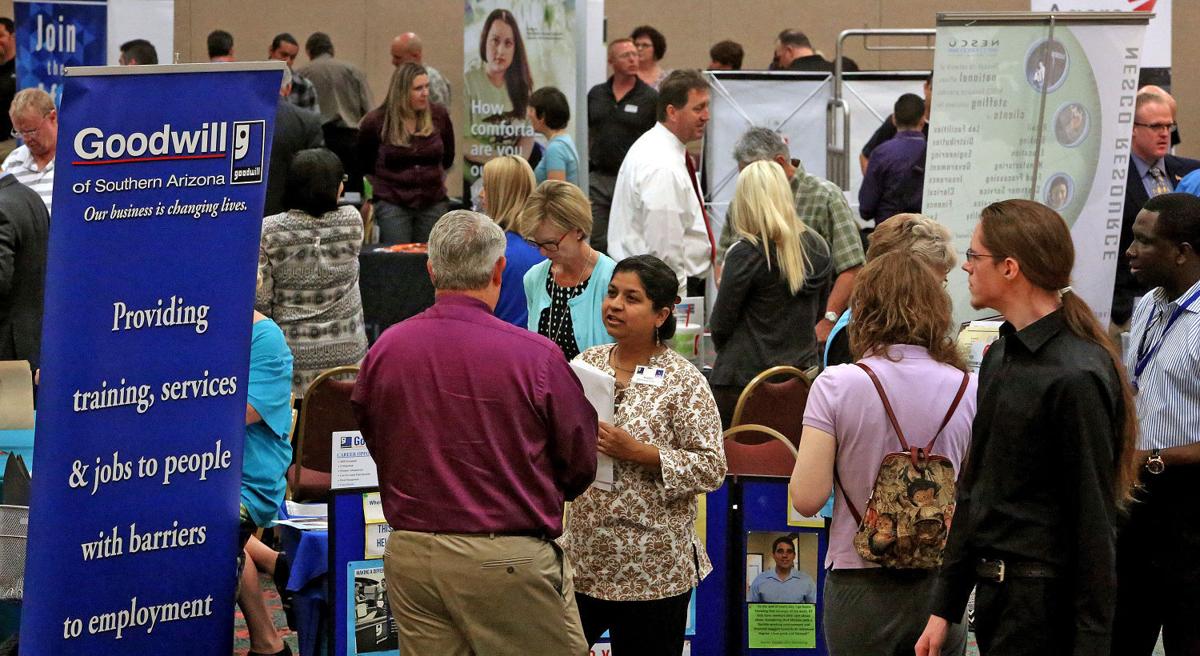PHOENIX — The state’s jobless rate shot up for the fourth consecutive month.
New figures released Thursday show the state’s seasonally adjusted unemployment rate for July hit 6.0 percent. That’s up two tenths of a percent from June.
But this appears to becoming a trend.
The May jobless rate was 5.6 percent. And it was just 5.4 percent in April.
More to the point, the statewide unemployment rate is back up to where it was a year ago.
On an unadjusted basis, Pima County’s jobless rate edged up a tenth of one percent to 5.7 percent in July.
The unemployment rate is based on a survey of households asking people whether they’re working or not and, if not, whether they are actively looking for employment.
A separate survey of private sector employers shows they shed 4,500 private workers between June and July. That puts total private sector employment at 2.28 million which is still 76,800 higher than the prior July.
But the higher unemployment rate means that the number of jobs created is not keeping up with the number of Arizonans who want work.
Economist Dennis Hoffman of the W.P. Carey School of Business said the report may not be as bad as it seems. He pointed out that, even with the increasing unemployment rate, the state is adding jobs in the private sector at a healthy rate of 3.5 percent a year.
So why is the jobless rate still rising?
“The basic challenge is that people do not have the skill sets that employers are looking for in the current environment,” he said.
Hoffman said if the state’s economy can grow at a more rapid rate, there will be a demand — eventually — for those of lower skill levels. In the meantime, they’re out looking for work and being counted among the unemployed.
“Odds are, this is a problem that will fix itself over the next few months,” he said.
Anyway, Hoffman said, the unemployment rate, by itself, is not a full picture of a state’s economy.
He pointed out that North Dakota has lost more jobs over the last year than any other state as falling oil prices have dried up demand for those in the industry. Yet it’s jobless rate is just 3.5 percent.
The difference? When the oil rig workers in North Dakota were laid off, they left the state. And since they’re not there looking for new jobs, they don’t show up in the jobless figures.
Still, Hoffman said there are numbers in the report that do concern him.
Most notable is the continued softness in the state’s manufacturing industry, particularly among firms that make computer and electronic parts. It shed another 500 jobs between June and July, bringing total employment down by 1,500 from the same time last year.
That’s a substantial 4.5 percent annual decline.
Hoffman said part of the problem appears to be the changes going on in electronics. He said that the components Arizona manufacturers are geared up to make are in less demand as they are being replaced by different technology.
Daniel Scarpinato, press aide to Gov. Doug Ducey, said the jobless numbers don’t paint a full picture of what he said is the state’s increasing economic health.
He cited the decision of some companies to move corporate headquarters to Arizona as well as some firms relocating operations here.
“There’s been some significant wins in areas where we have worked to do better,” Scarpinato said. And he said the state is better than it was a year ago despite the jobless rate being back where it was in 2015.
Scarpinato said one possible reason for the increase in the past four months is that people who had given up looking for work during the recession are now making another bid to get back in the workforce. More people who say they’re looking for work affects the bottom-line unemployment number.
But Scarpinato is not claiming that things are great.
“There’s a lot of work left to do,” he said, saying that’s why his boss is focusing on things like reducing regulation on business, improving the state’s reputation and restoring some of the funds that have been cut from K-12 education.
That, however, still leave the question of whether much of that can be offset by the cuts to higher education.
Two years ago Ducey signed a budget that cut $99 million from state universities.
The budget for the current fiscal year had $32 million for the schools. But $19 million of that is one-time money; another $5 million is earmarked for so-called “economic freedom schools” at the University of Arizona and Arizona State University.
Scarpinato called those numbers irrelevant.
“We’re focused not on input but output,” he said. And Scarpinato said the universities are turning out graduates with degrees at an increasing number.





